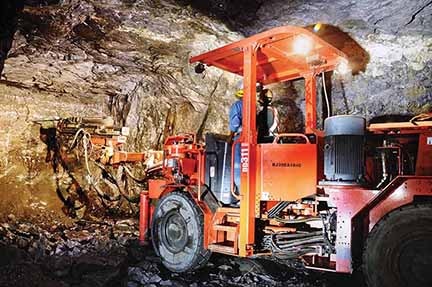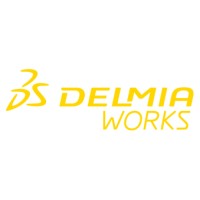The Indian Forging Industry has always been a major growth driver of the Indian manufacturing sector and is one of the important industries for the success of automobile, power sector and general engineering in the country. The Association of Indian Forging Industry (AIFI) is the umbrella organization of the forging Industry in India with more than 250 members across India. Its members’ products include rough forgings and/or machined parts like Crankshafts, Connecting Rods, Camshafts, Shifted Fork, Steering Components, Crown Propeller Shafts, Gear Box Components; Crown Wheel and Pinions, Front Axle Beams, Rear Axle Shafts, Earth Moving Link, Railway Tyres, Flanges/Pipe Fittings, Industrial Valves etc.
The forging industry, which is a major supplier to the auto companies and a critical industry that generates employment, has been continuously plagued with incessantly rising industrial fuel and steel prices resulting in rising input costs and shrinking margins.
AIFI has been the spokes body of the Indian Forging Industry for over four decades. It has played a major role in encouraging proactive dialogue between all the relevant stakeholders like the industry and Government (both in terms of suggestions for policy making and problem-solving), as also between the industry and the market (User industries — domestic and global.)
To gain better perspective and understanding of the overall forging industry scenario, AIFI commissioned an industry survey which was conducted amongst identified members and non- members. Out of the sample size of 500odd forging units, 419 entities participated.
The objective of the survey was to evaluate current and overall performance of the Indian forging industry covering small, medium and large segments of the industry and to address the critical areas which need immediate intervention. The results of this survey have been broadly summarized below.
Findings of the survey are based on the responses given by the 419 units who participated in the survey:
During the year 2012-13, the installed capacity of forging entities that participated in the survey was estimated to be around 37.7 Lakhs tones or 3.7 million tonnes. The total production of the said entities during FY 2012-13 was about 2.1 million tonnes.
The estimated turnover of the 419 entities in FY 2012-13 was INR 19,500 crore, with an overall capacity utilization of at around 57%. The capacity utilization of these entities decreased from the earlier 65% in FY 2011-12 to 57 % in FY 2012-13 due to the decline in demand from the automotive industry which accounts for 61% of total production of 21.12 akh tonnes or 2.1 Million tonnes.
-
Based on the installed production capacity and annual sales turnover of these forging units, they were classified into five categories namely very large, large, medium, small and very small units.
|
Scale of operation |
Installed capacity range (In ‘000 MT) |
forging units (in no.s) |
forging units (in percentage) |
|
Very Large |
above 75 |
8 |
2% |
|
Large |
30 to 75 |
15 |
3% |
|
Medium |
12.5 to 30 |
32 |
8% |
|
Small |
5 to 12.5 |
99 |
24% |
|
Very Small |
upto 5 |
265 |
63% |
-
Major Forging Clusters in India: The major clusters are Maharashtra, Punjab, Gujarat, Tamil Nadu, Haryana, Delhi, Karnataka, Jharkhand, West Bengal and Andhra Pradesh.
Distribution of Installed Capacity Break-Up (Region Wise)
-
Western region – 40% (1.53 million tonnes) – 159 units
-
Northern Region – 36% (1.36 million tonnes) – 157 units
-
Southern Region – 16% (0.59 million tonnes) – 81 units
-
Eastern region around 8% (0.29 million tonnes) – 22 units
-
Employment Potential:These entities themselves provide direct and indirect employment to around 93,400 people in the country.
-
Primary Raw material used: Carbon Steel, Alloy Steel, Stainless Steel, Super Alloy, Special Steel, Titanium, Aluminium.
-
The small and very small units are mainly dependant on manual labour, however medium and large units are semi /largely mechanized and some of the large units are world class.
Quality standards in the industry are in compliance with the applicable quality standards. The impact and changes in the Indian automobile industry is directly proportional to the Indian forging industry, so forging industry is often referred to as the backbone of the automobile industry. While the automotive industry is the main customer for forgings the industry’s continuous efforts in upgrading technologies and diversifying product range have enabled it to expand its base of customers to foreign markets.
Key Industry Trends
-
Increasing demand for ready to fit components / sub assemblies
-
Growing demand for precision forging components (Near Net shape forging) mainly due to reducing cost along the production chain
-
Increase in cheap imports from China (Increasing cheap Import from China as Chinese government offers 15% subsidy to their export projects, thus Chinese suppliers are able to supply in India at 20% lower prices) and aesthetic imports from Japan, Korea, Taiwan, Europe and Germany for components such as Axle assemblies, Power steering assemblies, Transmission Gear boxes, Crank Shaft, connecting rods, gear change finger (GC Finger) etc
-
There is a difference of Rs. 5000 /- per metric tonne of steel in China and India
-
To reduce costs associated with inventory, customers are demanding for Just in time (JIT) basis supplies of forgings
Key Problem Areas
-
Poor support from Government and Unfavourable Government Policies
-
Lack of infrastructure among companies in Small & Very Small scale
-
Facing issue related to unavailability of skilled and unskilled labour
-
Inadequate supply of power and increasing power price
-
Increasing cheap import from China
-
Increasing input costs such as rising raw material prices and high price of power
Industry Expectations
-
Raw Material:Government should take necessary steps to ensure that steel prices should be in tandem with international prices.
-
Enhance Competitiveness: Indian trade policies should be reviewed in a holistic manner to make it more competitive. (Support on reduction of import duty on steel, export of end products and rebate on forged parts.)
-
Higher market exposure: The government should take necessary steps to help companies reach out to international buyers, share relevant industry information via Indian consulates in respective countries, creating opportunities for participation in trade shows at a discounted price, participation in buyer seller meets/events and gathering of market intelligence.
-
Power: Availability of power at affordable costs to make the industry profitable and efficient. Government should also consider investments in development of power generation infrastructure and distribution mechanisms.
-
Lack of proper R&D facilities: Government should help facilitate creation of shared infrastructure and capacity development for R&D and testing labs. Schemes run by institutions like National Manufacturing Competitiveness Council (NMCC)and some Ministries like Micro-Small and Medium Enterprises (SMEs) can be tapped to meet financial requirements of setting up such facilities. Awareness about such organizations and schemes is also very low which needs to be worked upon.
-
Finance Related Issues: The Government should create awareness among SMEs about the need for getting credit worthiness rating done. There is also a need for creating awareness among the SMEs about availability of low cost institutional equity capital and risk capital funds for expansion plans of SMEs













Leave a Reply